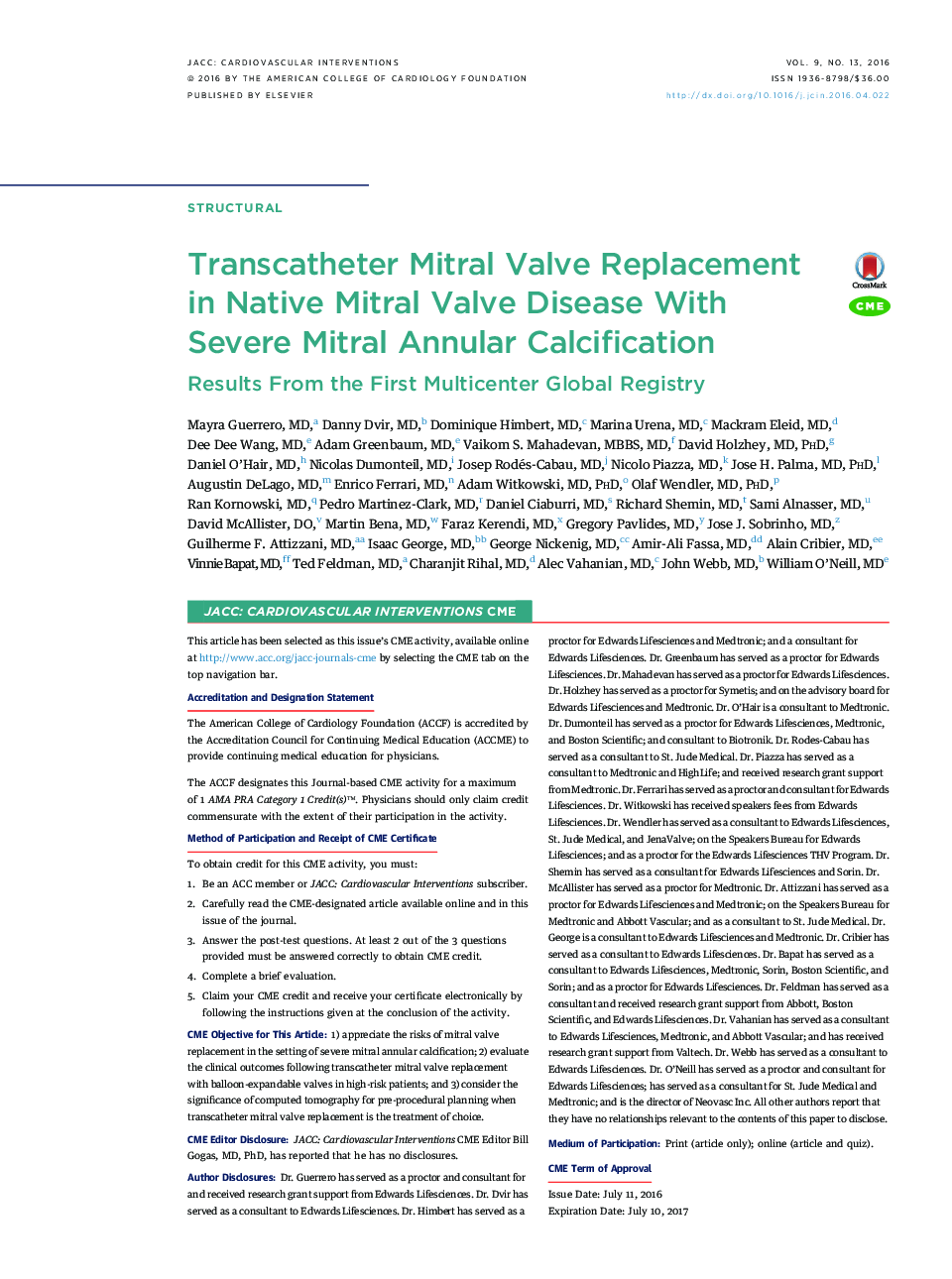| Article ID | Journal | Published Year | Pages | File Type |
|---|---|---|---|---|
| 2939689 | JACC: Cardiovascular Interventions | 2016 | 11 Pages |
ObjectivesThis study sought to evaluate the outcomes of the early experience of transcatheter mitral valve replacement (TMVR) with balloon-expandable valves in patients with severe mitral annular calcification (MAC) and reports the first large series from a multicenter global registry.BackgroundThe risk of surgical mitral valve replacement in patients with severe MAC is high. There are isolated reports of successful TMVR with balloon-expandable valves in this patient population.MethodsWe performed a multicenter retrospective review of clinical outcomes of patients with severe MAC undergoing TMVR.ResultsFrom September 2012 to July of 2015, 64 patients in 32 centers underwent TMVR with compassionate use of balloon-expandable valves. Mean age was 73 ± 13 years, 66% were female, and mean Society of Thoracic Surgeons score was 14.4 ± 9.5%. The mean mitral gradient was 11.45 ± 4.4 mm Hg and the mean mitral area was 1.18 ± 0.5 cm2. SAPIEN valves (Edwards Lifesciences, Irvine, California) were used in 7.8%, SAPIEN XT in 59.4%, SAPIEN 3 in 28.1%, and Inovare (Braile Biomedica, Brazil) in 4.7%. Access was transatrial in 15.6%, transapical in 43.8%, and transseptal in 40.6%. Technical success according to Mitral Valve Academic Research Consortium criteria was achieved in 46 (72%) patients, primarily limited by the need for a second valve in 11 (17.2%). Six (9.3%) had left ventricular tract obstruction with hemodynamic compromise. Mean mitral gradient post-procedure was 4 ± 2.2 mm Hg, paravalvular regurgitation was mild or absent in all. Thirty-day all-cause mortality was 29.7% (cardiovascular = 12.5% and noncardiac = 17.2%); 84% of the survivors with follow-up data available were in New York Heart Association functional class I or II at 30 days (n = 25).ConclusionsTMVR with balloon-expandable valves in patients with severe MAC is feasible but may be associated with significant adverse events. This strategy might be an alternative for selected high-risk patients with limited treatment options.
